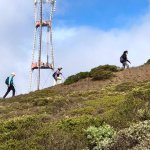“Pedestrians are the most vulnerable,” echoes the new report on severe traffic injuries
The San Francisco Department of Public Health just released its preliminary severe injury trends report, detailing how and how often people are being hurt in traffic crashes. We are grateful for DPH’s cutting edge work to use information from San Francisco General Hospital to give a fuller, more accurate picture on crashes than just SF Police Department Data (which you will see in the report captures only about half of severe crashes).
When we think about the state of our streets, it’s crucial to look at both traffic fatality numbers and severe injuries.
And because the number of severe injuries is much higher than fatalities, injury data is more statistically meaningful for identifying trends.
Here’s what we learned in the preliminary report, which includes data from 2011 through 2022:
- Pedestrians are the most vulnerable people using our streets. When you combine severe and critical injuries, pedestrians are hurt more than any other travel mode. That’s why Walk SF pushes the City to design streets to prioritize pedestrian safety over vehicle traffic, everywhere.
- Across all modes, critical injuries look to be on the rise. Given the rise of vehicle size and weight in recent years, it makes sense that an average crash is more likely to be life-threatening – especially if speeding is a factor.
- Black and Hispanic/Latino people in San Francisco are disproportionately affected by traffic violence. This is why traffic safety projects must be prioritized in Equity Priority Communities, where many designated ‘high-injury’ streets are concentrated.
- Children and youth under 18 represent a growing number of injuries. Walk SF asked for more detail on this in the final report on this alarming trend.
In 2022, 180 people were severely or critically injured while simply walking in San Francisco.
For many of those people, their lives will never be the same. This reality – and their stories – matter.
We also know that this report likely undercounts severe injuries; SFDPH’s report is based on data from San Francisco General, where most – but not all – crash victims are transported. And anyone who is hurt but not transported to a hospital doesn’t show up in this report at all.
You can read the preliminary report’s findings on slides 22-32 here. Walk SF attended the SFMTA’s Vision Zero Subcommittee meeting on, June 11 to hear firsthand about the report. The final report will be released in July.
Are you a traffic crash survivor, or know someone who is?
If you have been injured in a traffic crash, we hope you will learn more about San Francisco Bay Area Families for Safe Streets.
This group, overseen by Walk SF, is for traffic crash survivors, plus the loved ones of people hurt and killed in traffic crashes. It’s a place to find support and understanding, as well as speak out for safe streets if you’re ready to do that.
You can sign up for the Families for Safe Streets newsletter as a first step.
Banner image: Michael Halberstadt




